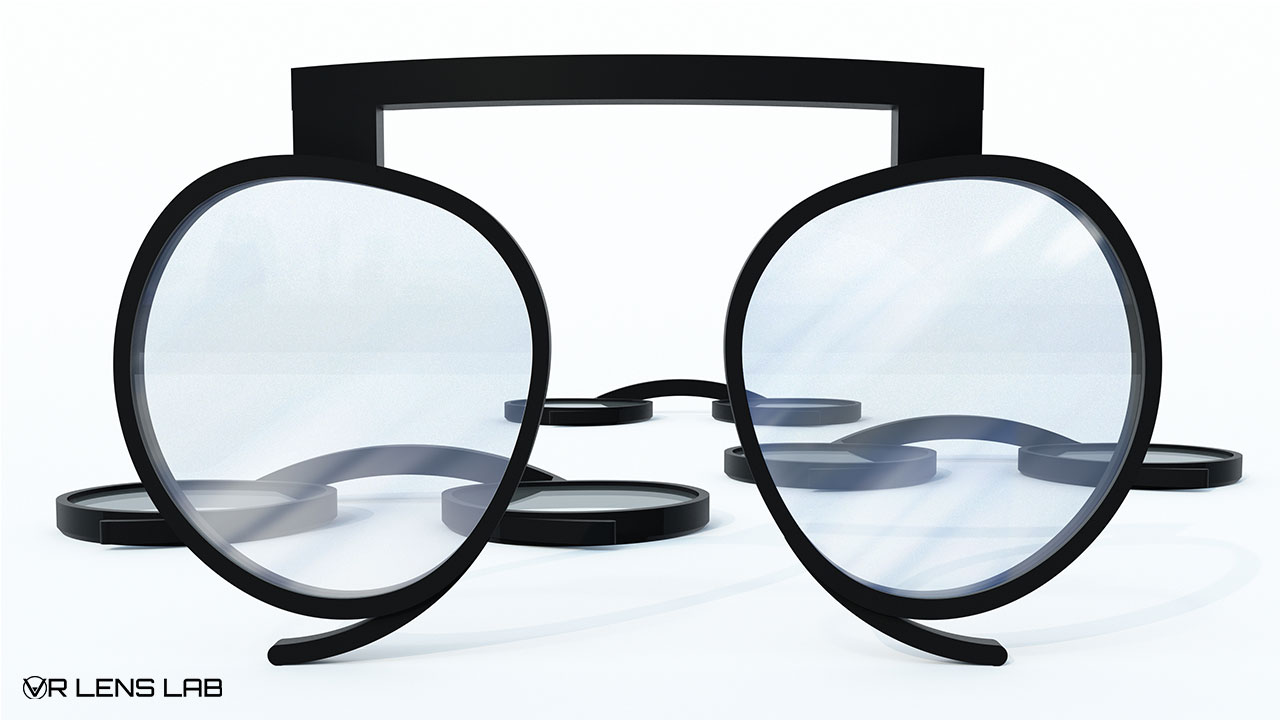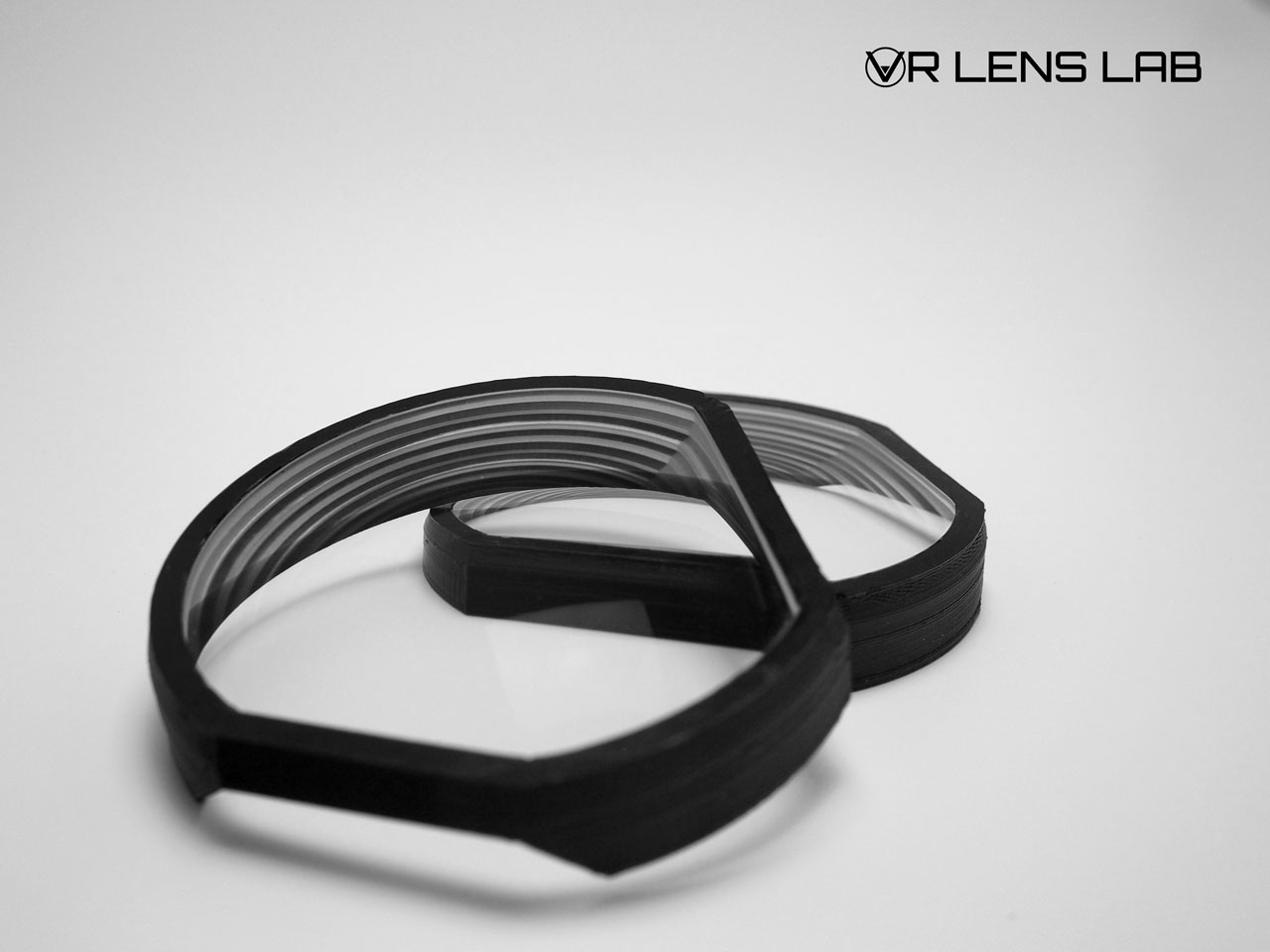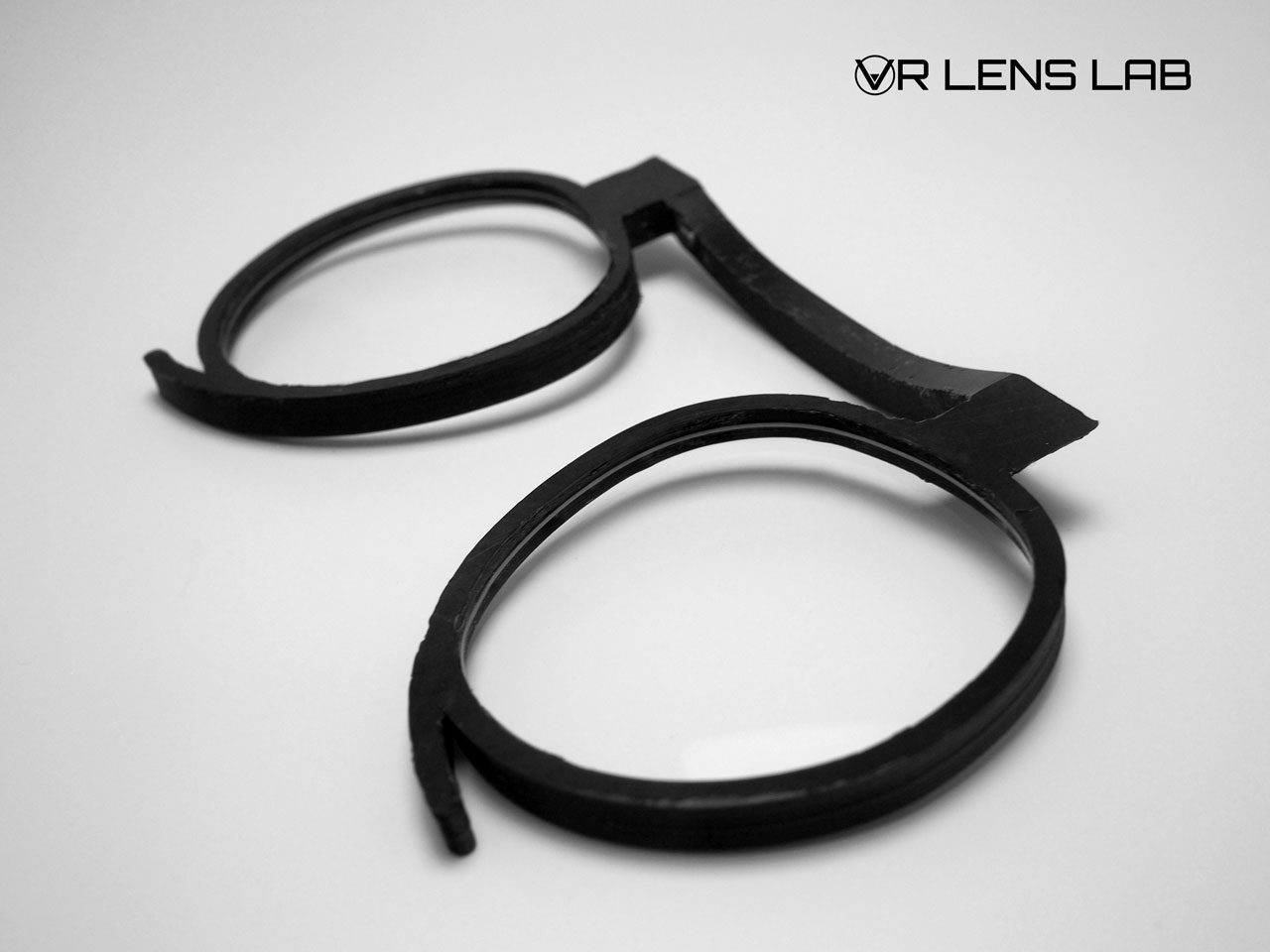Prescription Lenses In VR: VR Lens Lab Smashes Kickstarter Goal, Production Starts Next Month
VR Lens Lab has been running a Kickstarter campaign for its lens adapters that allow you to add prescription lenses to your Oculus Rift or HTC Vive. The campaign ended with the company pulling in more than eight times its funding goal. Production is slated to start next month.
VR HMDs can take you to magical places that your brain believes are real, but if you can't see clearly, the experience can fall apart. Oculus and HTC both support glasses to some extent, but neither HMD supplies a one-size-fits all solution. If you have very wide frames, or a large head, your glasses may not fit inside the HMD.
VR Lens Lab believes it has a solution for that problem. The company has developed lens covers that fit over top of the HMD lenses. The lens covers can be fitted with prescription lenses so you don’t have to wear your glasses while in VR. VR Lens Lab also offers a plano (non-RX) glass lens protector version for extra protection against scratches, even if you don’t need glasses.
VR Lens Lab created adapters for both the Oculus Rift and the HTC Vive. The Vive lens covers fit directly over the factory lens frames. The Rift doesn’t have plastic frames around its lenses, so the lens covers fit over the factory lenses and are supported at the top and bottom to hold them in place. The two lenses are held in one mold. We're not sure how having the lens covers installed will affect IPD adjustment in the Rift.
VR Lens Lab was seeking €5,000 in the Kickstarter campaign so that it could put the lens covers into production at a reasonable price. The company wasn’t able to offer prescription lenses through Kickstarter, so the options were to purchase one lens cover with plano lenses for €39 or two for €69. To get prescription covers, you’d have to purchase the frames without glass for €19 for one, or €29 for two. Prescription lenses would have to be purchased from VR Lens Lab, or your own local optician, after the campaign. The VR Lens Lab Kickstarter campaign ended with €43,323 in orders.
VR Lens Lab doesn't seem concerned about having far more orders than it needed. The company said that it should take approximately 30 days to finalize the molds and get production started, and it expects to be able to produce the frames for backers within 15 days of receiving the final molds. The company said that backers will be asked to provide prescription details at the end of May. Backers will also get the option of ordering additional frames at the same time.
VR Lens Lab is not yet taking orders on its website, so if you missed the Kickstarter, you’ll have to wait until orders open again.
Get Tom's Hardware's best news and in-depth reviews, straight to your inbox.
Follow Kevin Carbotte @pumcypuhoy. Follow us on Facebook, Google+, RSS, Twitter and YouTube.
Kevin Carbotte is a contributing writer for Tom's Hardware who primarily covers VR and AR hardware. He has been writing for us for more than four years.
-
Strider_X I wonder...could this be handled in software? Upload your prescription details and let the software adjust the rendering accordingly? It is a virtual image after all.Reply -
wifiburger this seems very stupid, just put mechanical lenses on your VR Kit, you can manually adjust with a dial on the VR itselfReply -
heinlein ReplyI wonder...could this be handled in software? Upload your prescription details and let the software adjust the rendering accordingly? It is a virtual image after all.
Interesting question; wish I had an interesting answer for you.
-
SteelCity1981 the problem with this is people that wear glasses eye sight doesnt stay the same. so every couple years you will need new lenses and that could get costly.Reply -
grimfox ReplyI wonder...could this be handled in software? Upload your prescription details and let the software adjust the rendering accordingly? It is a virtual image after all.
Interesting question; wish I had an interesting answer for you.
Not that I'm aware of. One benefit of VR is that if you are near-sighted the focal distance doesn't change and is close to your eye's so it should be pretty clear, no glasses needed. If you have astigmatism or are far-sighted then what you would see is going to be blurry. There is no way to digitally compensate for blur.
the problem with this is people that wear glasses eye sight doesnt stay the same. so every couple years you will need new lenses and that could get costly.
Lenses are relatively inexpensive for a plan glass/polycarbonate. It's the coatings and frames that a really expensive. In my experience. -
rayden54 Reply
You're going to have to buy new glasses anyway. I doubt it would cost that much more.17949770 said:the problem with this is people that wear glasses eye sight doesnt stay the same. so every couple years you will need new lenses and that could get costly.
(Wonder if anyone will end up wearing these as emergency glasses?) -
KermodeTech ReplyI wonder...could this be handled in software? Upload your prescription details and let the software adjust the rendering accordingly? It is a virtual image after all.
I would imagine each frame's post-processing performance cost would be too high to be considered within reason. VR stereoscopic images at 90hz is already pushing the best cards to their limits. It does make me wonder if it would be possible to have a prescription slider on top of older computer games that don't require much performance, or even television. -
Jason_128 The article has old information. The final Rift frames are two separate pieces just like the Vive frames and will work with the IPD adjustment just fine.Reply -
skit75 Reply17949858 said:I wonder...could this be handled in software? Upload your prescription details and let the software adjust the rendering accordingly? It is a virtual image after all.
Interesting question; wish I had an interesting answer for you.
Not that I'm aware of. One benefit of VR is that if you are near-sighted the focal distance doesn't change and is close to your eye's so it should be pretty clear, no glasses needed. If you have astigmatism or are far-sighted then what you would see is going to be blurry. There is no way to digitally compensate for blur.
the problem with this is people that wear glasses eye sight doesnt stay the same. so every couple years you will need new lenses and that could get costly.
Lenses are relatively inexpensive for a plan glass/polycarbonate. It's the coatings and frames that a really expensive. In my experience.
I'm far sighted with an astigmatism and this has been my fear\gripe about the new VR headsets. You're saying I have to stay on the sidelines? What is the limitation of correcting in "software" for people like me?


